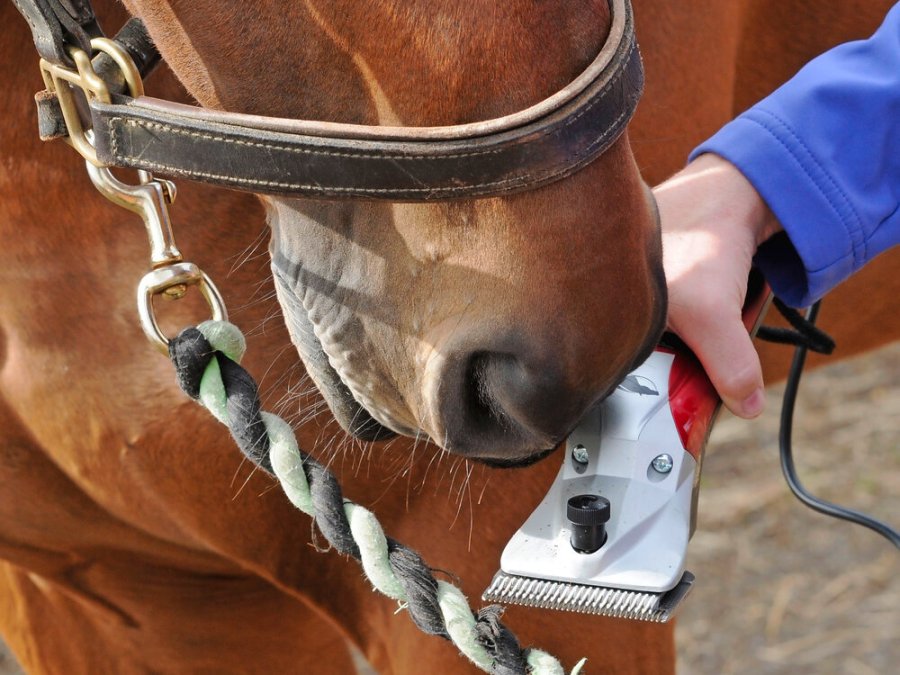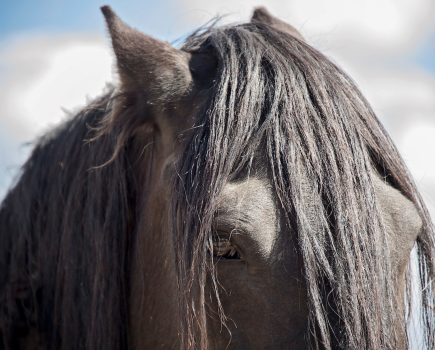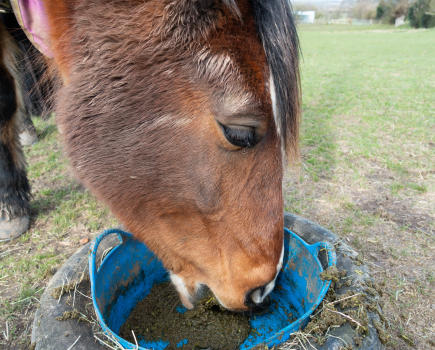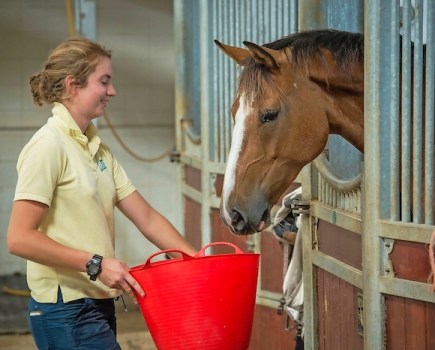Clipping a horse is a job that most people consider an essential part of taking care of a horse in winter. For a horse scared of clippers, or who is nervous about being clipped, it often takes more than using quiet horse clippers to convince them there is nothing to be scared of. Or perhaps it is the first time your horse is being clipped. Either way, clipping a nervous horse takes time, patience and good preparation to ensure it is a positive experience that will make clipping easier in the future.
Experienced groom Daniel Tarpey offers the following advice for clipping a horse scared of clippers.
“First of all, make sure your horse is in an area where he feels settled before you turn the clippers on,” he says. “It’s a good idea to have a haynet there to keep him happy, and, if you can, have someone else with you to help, just in case you have any problems — accidents can happen.”
Daniel suggests clipping a nervous horse using the following process:
- Start by running the clippers all over the horse’s body before turning them on. This gets the horse used to how they feel.
- Once the horse seems happy, and shows signs of relaxing, move away and turn the clippers on. Leave them on to give the horse time to get used to the noise.
- Turns the clippers off for a few seconds, and then on again, several times.
- When the horse has settled, start clipping easy areas that aren’t sensitive and are easy for you to step away from if the horse reacts (like their shoulders). Gauge your horse’s behaviour and only move on to other areas if they are calm enough for you to do so.
- You may not achieve this in one session. Do a little day by day to help your horse learn.
When you are working with a horse scared of clippers, remember to take it slowly and have lots of breaks. This is also good practice because it helps to prevent the clippers over-heating and becoming too warm against the horse’s skin. Be sure sure to give your horse lots of praise and reassurance throughout.
Further reading
How to clip a horse: correct blade tension, straight lines, oiling intervals and other expert tips
Clipping a horse: types of clip and how much hair to take off
Your Horse tests clippers for how easy they are to use, end result and value for money
Clipping a horse for the first time
When you’re clipping a horse for the first time — it might be the first time in their life or the first time since you have owned or loaned them — it is important to make a positive start. Clipping expert Lisa Edmed shares the following advice.
1 Positive introductions
Go up to your horse first to say hello without any equipment. Give them a treat and let the horse smell you. When clipping, people often wear suits that can be scary to a young horse. Once the horse is happy, start with trimmers — turn them on and off and, as long as they don’t show signs of being nervous, stroke the horse with the clippers.
Now, if the horse is happy, start taking the hair off. Always have a helper standing at the horse’s head giving them attention and reassurance, possibly treats too if necessary, to keep the experience positive. This is vital when working with a horse who is scared of clippers.
2 Don’t tie the horse up
Personally, I don’t like horses being tied up to be clipped, especially first timers. I like them to be able to walk away (within reason) if they need to and not feel trapped. This gives them confidence that they can move away when something’s worrying them. Being held in a secure area outside is much safer than being tied up in a stable.
This is where having a helper is really useful. Avoid trying to hold the horse still yourself and clip at the same time. By having a person holding the horse rather than tying them up, if they do try to run backwards they won’t pull the lead-rein tight and panic more, potentially hurting themselves (or you).
3 Read the horse’s body language
Constantly look out for signs that the horse isn’t happy, such as fidgeting and pulling away. If you think they are becoming anxious, give them a short break before trying again. Only go as quickly as the horse is comfortable with. It might take several sessions of just introducing the horse to the sound of the clippers over several days, for example, before you can touch their body. Patience pays off in the long run, especially with horses who are scared of clippers.
4 Build up to bigger clippers
Once your horse is happy with small trimmers, which tend to be quieter, you can then build up to using bigger clippers which are noisier and vibrate more. I use a cordless pair of bigger trimmers on young horses initially — they are safer than wired clippers. You can then work up to using the bigger clippers.
5 Don’t take off too much hair
Only do a low, minimal clip first time, such as a bib and belly clip or a small Irish clip. You don’t want your horse having to stand still for too long. I always keep hair on a first-timer’s back for the first few clips, as they can be sharp to ride after being clipped. Not having any hair in this area can make the problem worse.
6 Make sure clipping is a good experience
Keep the experience as positive as possible. If you’re nervous, get an experienced person to clip your horse the first time. Even if you feel confident enough to do it yourself, always enlist a helper. Listening to music and/or chatting to your helper is also a good idea. It can have a calming effect and gives your horse something to listen to that isn’t the noise of the clippers.
Love hacking? Join our free #Hack1000Miles challenge and see how far you can go!









